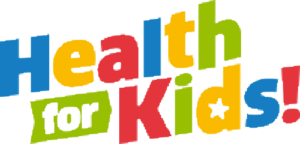9,925
messaging conversations between young people and school nurses




ChatHealth in school nursing was first piloted in 2013 in Leicester, Leicestershire and Rutland as a safe and secure way to contact school nurses via text messaging.
Since then, school nursing messaging services have been widely adopted by school nursing services throughout the UK – 77% in England, 100% in Northern Ireland, 71% in Wales and 7% in Scotland. Meaning that more than 2.9 million young people and the parents and carers of 3 million children aged 0-19 can reach school nurses via ChatHealth.
During 2023-24, the number of messaging conversations with parents increased by 116%, which demonstrates how this has improved access for families.
Paid social media adverts promoting ChatHealth services were viewed over 71 million times and generated almost 400 thousand clicks through to chathealth.nhs.uk to raise awareness of school nursing messaging services with young people and parents of school-aged children.
Working in partnership with the School and Public Health Nurses Association (SAPHNA) we launched a new podcast series, School Nursing Uncovered in January 2024. Featuring school nurses from across the NHS and reaching over 3.3k downloads since it’s release, the podcast celebrates the huge value and impact that school nursing has in supporting the health and wellbeing of children and young people.
Number of Contacts
9,925
messaging conversations between young people and school nurses
Top Reasons for Contact
Busiest Time for Contact
On Mondays and Tuesdays
between 14:00 – 16:00
Service User Experience
73%
of young people who used ChatHealth said their conversation helped them
Staff User Experience
79%
of school nurses surveyed said they would recommend the use of ChatHealth to other health professionals.
Feedback from a Young Person
“I’ve never really been the person to open up a lot but ChatHealth has really helped me and shown that help is out there.”
Feedback from a School Nurse
“It is a very valuable service for young people, especially when young people have difficulty in engaging face-to-face or do not want to give their personal details initially.”
Evidence
Case study on Kent School Health’s Snapchat campaign to increase awareness with young people
Number of Contacts
4,934
messaging conversations between parents and carers of 5-19 year olds and school nurses
Number of Contacts
43,244
messaging conversations with parents and carers of 0-19 year olds and school nurses/health visitors
Top Reasons for Contact
Busiest Times for Contact
On Mondays and Wednesdays
between 9:00 – 11:00
Service User Experience
84%
of parents and carers of school-aged children who used ChatHealth said their conversation helped them .
What Parents Say
“There’s so much out there it’s difficult to know how to get help. It is really useful to be able to contact school nurses via text at a time that’s convenient.”
What School Nurses Say
“The text messaging service provides service users a quick and easy way to receive advice and support from the Health Visiting and School Nursing teams and is much quicker than waiting for a call back from Duty.”
Evidence
BBC Report on the launch of ChatHealth in Cornwall and the Isles of Scilly in January 2024.




Health for Kids and Health for Teens are part of our suite of HealthWebsites, along Health for Under 5s. Co-designed with service users, these award-winning health information and promotion websites provide age-appropriate health and wellbeing information to children, teenagers and their parents and carers.
All content has been produced by school nurses and other health and wellbeing experts. Localised information is delivered in partnership with 13 NHS providers across the UK, Each partner has a Local Area section, which includes local information, news and support services.
Download Health Websites product guide
Visit Health for Kids website
Visit Health for Teens website

Health for Kids provides a fun way for primary school aged children to learn about their health.
The Grown-Ups area offers health advice, news and support services to guide parents and carers through their child’s primary school years.
Number of Local Areas
13
Local Areas
delivered by NHS providers
Most Visited Pages
Service User Experience
81%
of Health for Kids visitors said the information helped them
Where Visitors Came From

Health for Teens provides an engaging way for young people aged 11-19 to learn about their health.
Number of Local Areas
17
Local Areas
delivered by NHS partners
Most Visited Pages
Service User Experience
73%
Health for Teens visitors said the information helped them
Where Visitors Came From




HealthForms are used by school nurses to deliver digital health and wellbeing screening programmes in schools.
A recent evaluation (between January 2020-March 2022) in Leicester, Leicestershire and Rutland found the tool had great potential in identifying health needs among young people.
Since then, other commissioners and providers of the 0-19 Healthy Child Programme have recognised its effectiveness, leading to the set-up of HealthForms in 11 other areas to deliver school-based screening across a range of year groups in primary and secondary schools, according to commissioner requirements.
Number of Responses
47,531
digital forms completed by young people and parents/carers
Number of Red Flags Raised
10,744
responses with 1 or more red flags raised
Year Groups Taking Part
Feedback from a Young Person
“I think it’s a good way for students to get that first step to get help if they need it…this survey gives an opportunity to ask for help without really having to ask for help.”
Feedback from a School
“The relationship that we’ve had between our school nurse service and us as a school has improved through this process.”
Feedback from a School Nurse
“I’ve picked up children that have had no support in the past, not even told their parents, schools or anybody. So, we are picking up young people that otherwise would have continued to escalate further.”